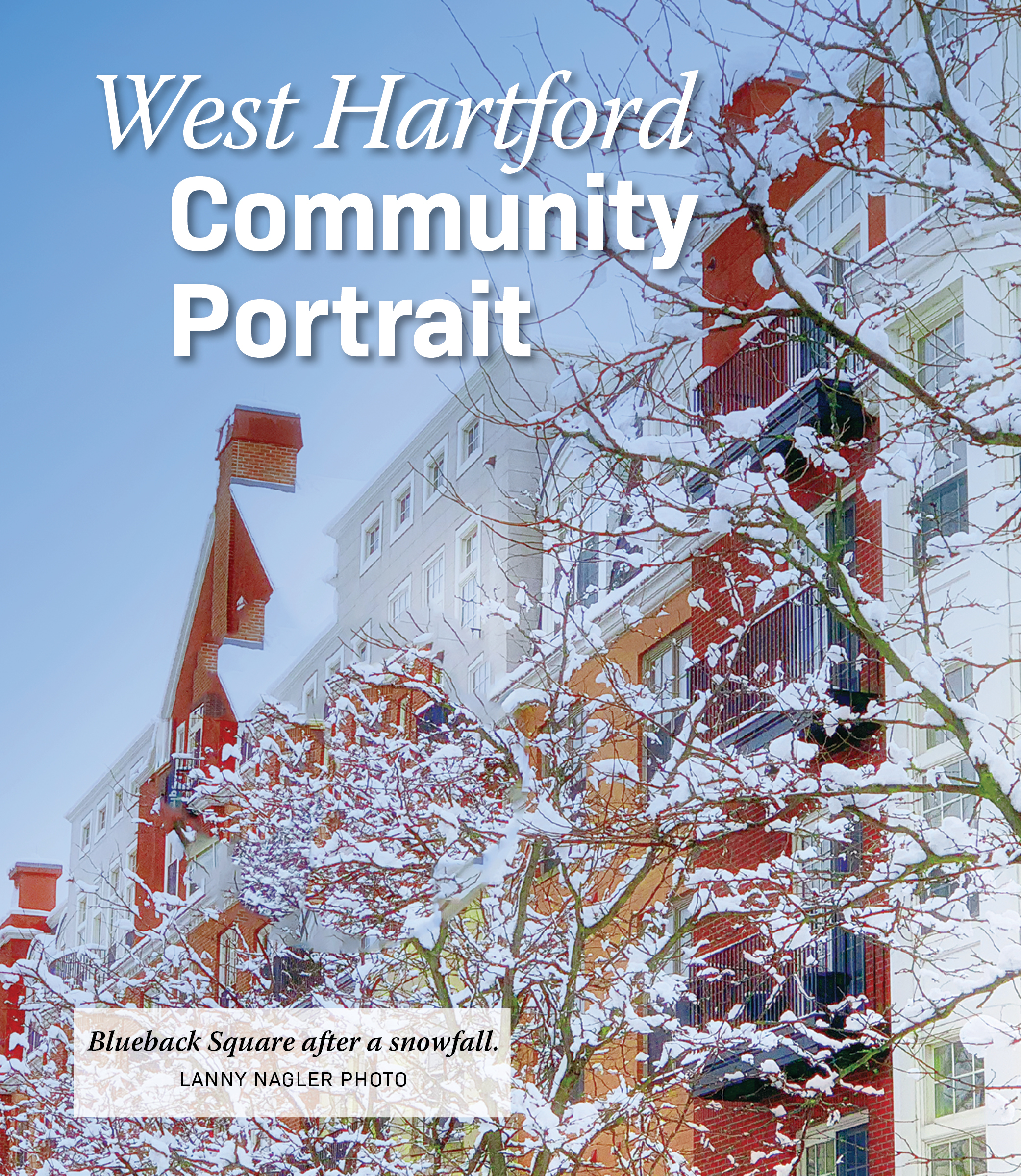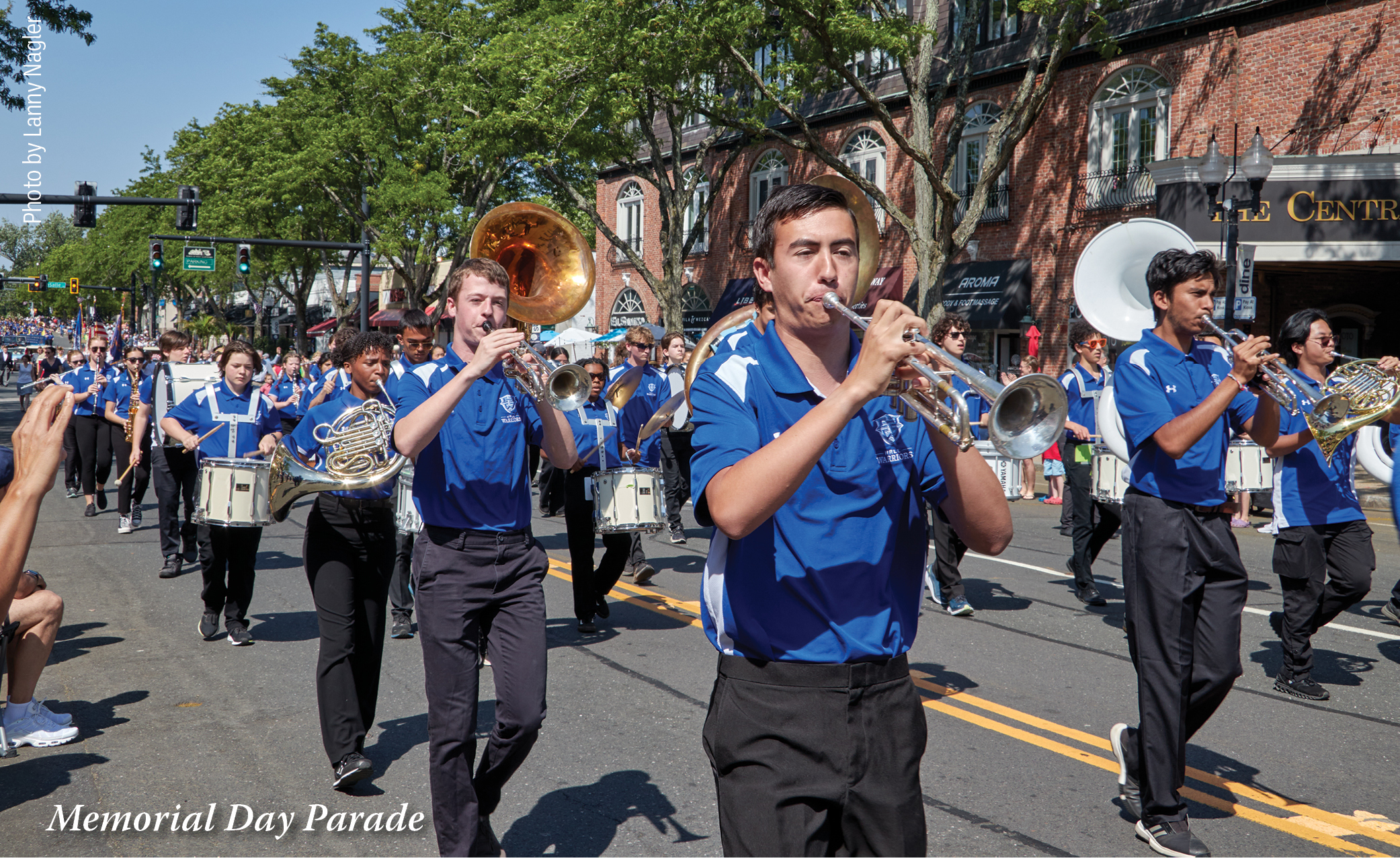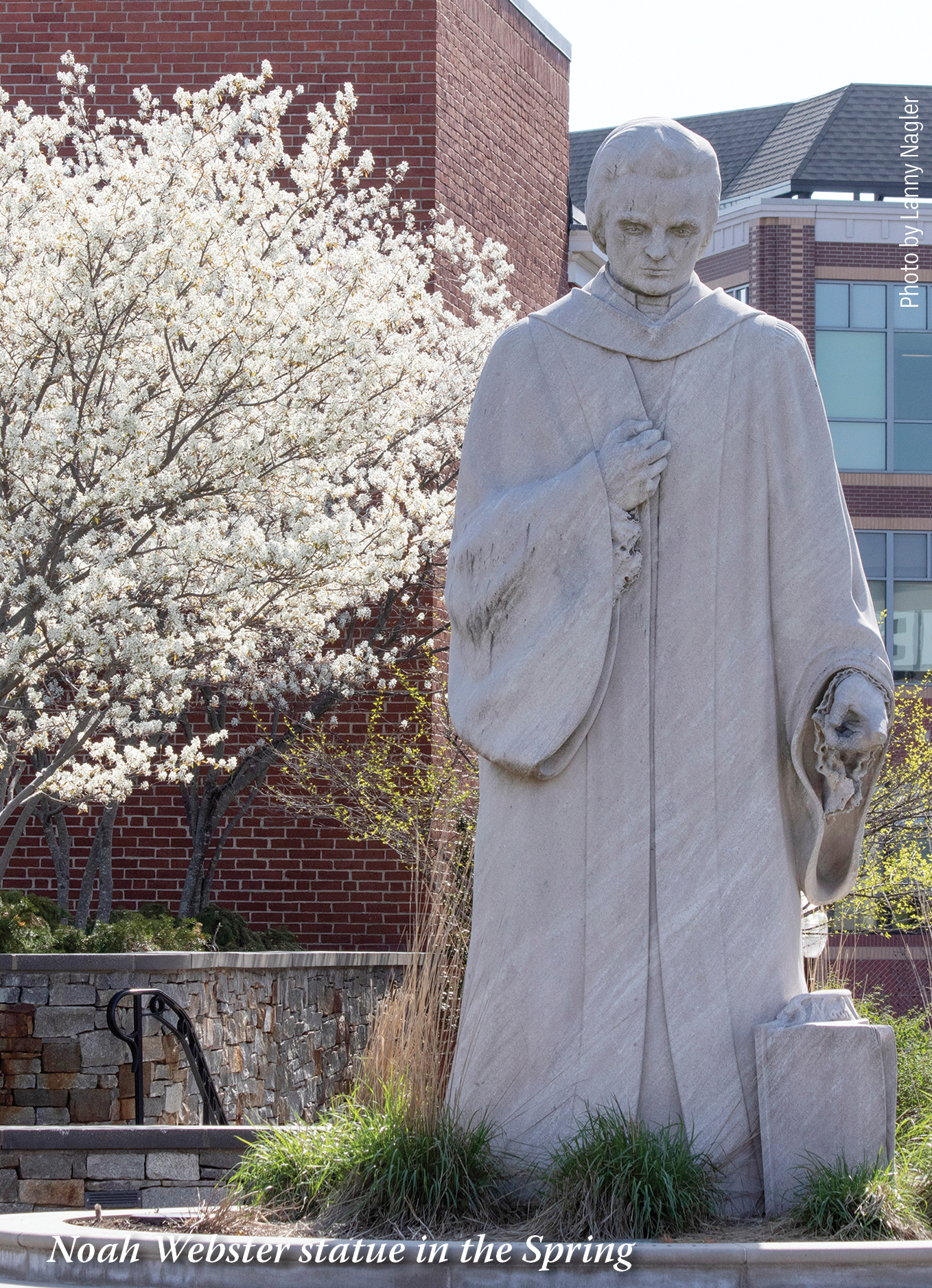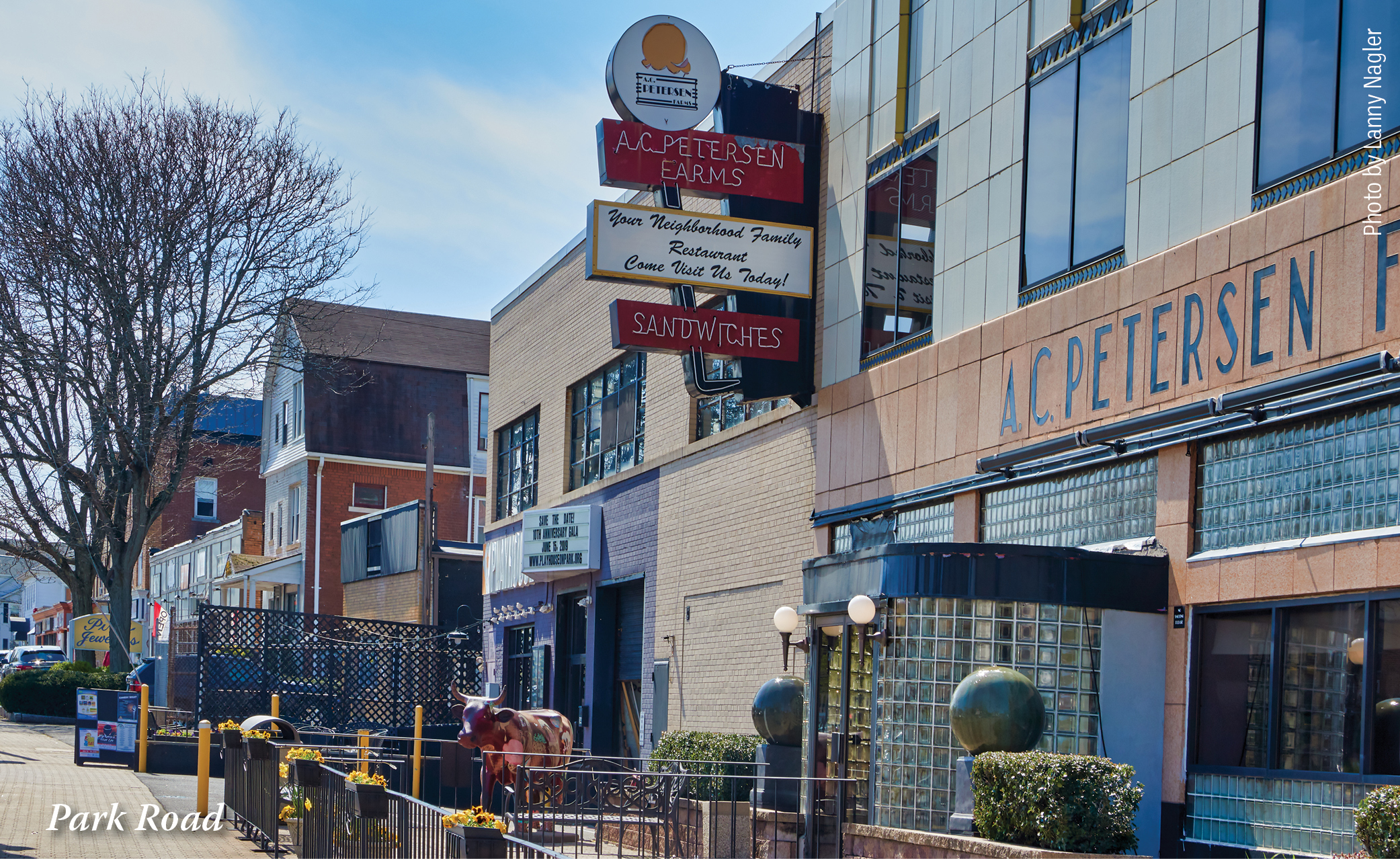
Town
Site - Public Schools
- Public
Library - Visit - Numbers
You Need
Founded in 1672 and incorporated in 1854, West Hartford — like so many other Connecticut towns — was originally a busy farming community, its lush woodlands, spacious fields, and clear streams providing just the right setting for both crops and livestock alike. And that’s pretty much the way things were until well into the late 19th century, when business leaders from Hartford, the State’s thriving capital city, began building stately homes on a broad ridge along the town’s eastern border. The street they established, known as Prospect Avenue, was celebrated for its stunning views of the city, as well as its delightfully close proximity to Elizabeth Park, which was designed in 1896 by distinguished landscape architects Frederick Law Olmsted and Sons and named for the wife of Charles H. Pond, who bequeathed the land to the City of Hartford.
As turn-of-the-century trolley lines made their way west, so did professionals and their families, continuing to settle along Prospect Avenue — then north of Farmington Avenue and around Elizabeth Park, often in substantial brick Colonials, Tudors, and custom-designed homes that reflected their success. Over time, the development continued north on Bloomfield Avenue toward the University of Hartford, as well as northwest into what is now referred to as the Hartford Golf Club area. But West Hartford’s most robust development occurred following World War II, when the high-tech and insurance industries began to prosper in downtown Hartford, creating a greater demand for new housing on the city’s fringes.
In the ‘50s, the primary avenues — Albany, Asylum, and Farmington — served as key commuter arteries, but when the ‘60s arrived, so did major highways, such as I-91 North and South and I-84 East and West, all of which made West Hartford easily accessible for families of more modest means. Soon, road and related improvements farther west on Albany Avenue led to the subdivisions of ranch, split level, and smaller Colonial-style homes that encircled Bishops Corner, while west of North Main Street, a segment of Hartford’s north-end Irish community was busy establishing new neighborhoods, too — and with them both Northwest Catholic High School and St. Timothy’s Church and Elementary School.

Along with those neighborhoods came new businesses, turning Bishops Corner into a commercial nexus. One of the first to locate there was The Crown Market, a popular kosher food store that moved north to remain close to the Jewish population already in the process of establishing a vibrant religious and residential community. Soon after, shops and restaurants of all sorts began opening, and more recently, the Big Y and Whole Foods joined The Crown, along with additional places to shop and dine, like Harry’s Bishops Corner Pizza, Panera, and The Blue Plate Kitchen, as well as Staples, Pet Supplies Plus, Target, and Marshall’s/Homegoods.
Today, Bishops Corner boasts a new generation of condominium and apartment residences, as Albany Avenue transitions into Albany Turnpike/Route 44 and widens, connecting West Hartford not only to Avon but to Simsbury and Farmington, as well. Indeed, impressive new homes perched along the western hilltops overlook Hartford, West Hartford, and the Farmington Valley just as those first homes in West Hartford overlooked the capital city.
South of Bishops Corner, where North and South Main Streets intersect Farmington Avenue, is West Hartford Center — or simply The Center. With North Main leading north through Bishops Corner and Bloomfield to I-91, and South Main leading directly to I-84, the Center serves as home to the seat of the town government, host to countless community events, and the town’s principal retail district. In fact, despite having lost some of its longtime retail base to the malls and plazas sprouting up on the town’s fringes, the mid-‘90s saw the Center cleverly leverage its small-scale architecture, pedestrian amenities, and convenient parking to not only reinvent but reassert itself, attracting some of the Greater Hartford region’s most celebrated new restaurants and upscale clothiers. That, in turn, has helped retain the older, well-established specialty shops, such as The Toy Chest, while welcoming new dining spots like Treva, Arugula Bistro, Zohara, The Cheesecake Factory, The Blue Elephant Trail, and Max Burger.

Traveling west out of the Center, Farmington Avenue crosses Mountain Road, a major north-south artery, and becomes the most direct link to the town of Farmington. And east of the Center, just beyond the town green, is Blue Back Square.
Completed in 2008 and convenient to I-84 from South Main Street, Blue Back not only features 230,000 square feet of trendy retail establishments like Crate & Barrel, dining and relaxing spots like The Green Teahouse, 60,000 square feet of offices, a major healthcare facility, 120 luxury condos, and a movie theater called Cinépolis but also Delamar West Hartford, a new $30 million hotel, “offering unparalleled luxury and distinctive charm.”
Heading further south along South Main to Park Road, then east to South Quaker Lane, you will find the beginning of the Park Road neighborhood, which extends a full 12 blocks west of the Hartford city line and retains much of its mid-1900s character. Still further south is Elmwood Center, which links Quaker Lane South, New Park Avenue, and South Main Street to New Britain Avenue and Westfarms Mall.

The Park Road area features housing above some of the stores, along with the many sturdy two- and three-family homes; delightfully intriguing ethnic markets; affordable restaurants like the very popular Effie’s Place, A. C. Petersen Farms, and Park Lane Pizza; businesses passed from one generation to the next, such as Hall’s Market; and the host of popular corner taverns and saloons that line the streets, attracting local residents in droves.
In Elmwood, described by the town’s Historical Society as “one of the first West Hartford neighborhoods to be a self-contained community with its own school, church, post office and stores,” the streets continue to weave tidy single- and two-family homes into small neighborhoods. Here, a surge of renovation and redevelopment is providing exciting new energy, with the main attraction continuing to be dining, including three great little pubs — The Corner Pug, The Fernwood Restaurant, and Beachland Tavern. However, sharing the limelight with good food are Jerry’s Artarama, Racquet Koop, and Alyce Carella’s Dance Center, two pharmacies and a convenience store, a bank, karate and Pilates studios, and an unobtrusive gas station, collectively attracting artists and dancers, shoppers, fitness enthusiasts, and those with a weekly to-do list.
Heading north from Elmwood is New Park Avenue, where specialized home products and design services have clustered into what is now known as the Home Design District, while continuing east on New Britain Avenue reveals a whole neighborhood of bustling Asian enterprises, such as New Asia Chinese Restaurant, that have revived much of the old Shield Street Plaza.
Heading west leads to the Corbin’s Corner/Westfarms Mall section of town, and heading back northwards are Conard High School, which was built in the late 1950s, and Rockledge Country Club, a nice 18-hole golf course that is town-owned, open to the public, and includes a casual dining spot called Rockledge Grille.
Just above Ridgewood Road are the Wood Pond and Woodridge Lake areas, once seasonal enclaves that have now become stylish waterfront addresses. And nearby, two impressive town-owned swimming and skating facilities — the Cornerstone Aquatics Center and the Veteran’s Memorial Ice Skating Rink — are complemented by the Buena Vista Golf Course, a sweet 9-hole, par-32 setup that totals less than 2,000 yards.
Finally, on the town’s southwest fringe, situated mostly in Farmington but always identified with West Hartford, is Westfarms Mall, which was built in 1974. Sitting astride I-84, conveniently connected to the town’s main internal arteries, and comprising more than 1.3 million square feet of stores and restaurants, Westfarms remains the granddaddy of regional retail centers.
Today, West Hartford continues to grow. But more importantly, it continues to renew itself. Home to a diverse population of almost 64,000 residents who speak no less than 66 different languages and dialects, there are some 30 places of worship, a wide assortment of marketplaces, and a median home price that welcomes continued diversity. But those are only some of the many reasons why this uniquely vibrant town remains every bit as desirable now as it was when those first mansions went up along Prospect Avenue ridge. Discovering the rest of those reasons promises to be a delightful adventure.
Photographs by Lanny Nagler
|